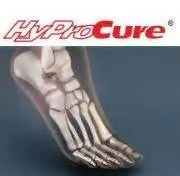Bunions
The term bunion refers to an enlargement of the base joint of the toe, the connection to the foot. This enlargement may be formed of swollen tissue or a bony growth, and is caused by the shifting of the bones in the big toe inward, toward the other toes of the foot. The area around the base of the big toe may become inflamed, red, and painful.
Genetic factors are important in the formation of bunions – people who get bunions are usually genetically predisposed to this bone displacement, and may cause its onset by wearing improperly fitting shoes, or by running or walking in a way that causes stress to the feet. Another common cause for bunions is wearing high heeled shoes. The weight of the body in these shoes pushes the toes into an unnatural position, possibly causing bone displacement.
A podiatrist who specializes in foot structure and bio-mechanics will be able to quickly diagnose bunions. Bunions must be distinguished from gout or arthritic conditions, so blood tests may be necessary. The podiatrist may order a radiological exam to provide an image of the bone structure. If the x-ray demonstrates an enlargement of the joint near the base of the toe and a shifting toward the smaller toes, this is indicative of a bunion.
Wearing wider shoes can remove the pressure on the bunion and reduce pain. High heeled shoes should be eliminated for a period of time as this type of shoe generally pushes the big toe outward toward the smaller toes. This may be enough to eliminate the pain associated with bunions; however, if pain persists, anti-inflammatory drugs may be prescribed. Severe pain may require an injection of steroids near the bunion. Orthotics for shoes may be prescribed which, by altering the pressure on the foot, can be helpful in reducing pain. These do not correct the problem, but by eliminating the pain, they can provide relief.
For cases that do not respond to these methods of treatment, surgery can be done to reposition the toe. A surgeon may do this by taking out a section of bone, or may rearrange the ligaments and tendons in the toe to help keep it properly aligned. It may be necessary even after surgery to wear more comfortable shoes that do not put undue pressure on the toe as the big toe can easily move back to its orientation toward the smaller toes.
Morton's Neuroma
Morton's neuroma is a painful foot condition that commonly affects the areas between the third and fourth toe and the ball of the foot. Other areas of the foot can also be susceptible to this condition. Morton’s neuroma is caused by an inflamed nerve in the foot that is being squeezed and aggravated by surrounding bones. Women are more likely than men to have an occurrence of this foot condition. When a person has Morton's neuroma, it can feel as if they are walking on stones or marbles.
There are risk factors that can increase a person's chance of having Morton's neuroma. Ill-fitting high heels or shoes can add pressure to the toe or foot area. Jogging, running and any other sports that involve constant impact to the foot area can make a person more susceptible to this condition. If a person has flat feet, bunions or any other foot deformities, it can put them at a higher risk for developing Morton's neuroma.
There is no one major sign that indicates a person has Morton's neuroma, but rather certain symptoms to look for. A person who has burning in the ball of the foot or tingling and numbness in the toe areas are signs they may have Morton's neuroma. The pain increases greatly when wearing shoes or being active. There usually is little or no pain at night.
If a person suspects that they have this condition, they should visit their doctor. A physician will check for palpable masses between the bones of the foot. A doctor will also apply pressure to the foot or toe area to replicate the pain a person experiences when active. Range of motion tests and X-rays are other options a doctor may offer a patient to rule out other conditions or problems.
Treating Morton's neuroma can be as simple as changing the type of shoes a person wears. Wear wider shoes or flat shoes with a soft sole. Doing this may help reduce the pressure on the nerve that is aggravated. If necessary, a person can have a cortisone injection to help reduce swelling and pain in the foot area.
If these methods don't relieve the symptoms, consulting with an orthopedic surgeon should be the next option. During a consultation, a patient will find out about the treatment methods available for Morton's neuroma. A surgeon can release the tissue around the nerve that is causing this pain, or they can remove a small area of the nerve completely. There is a short recovery time for this type of surgery, and afterward, patients can return to their normal lifestyle.
What Are Ankle/Foot Orthotics?
Orthotics is a medical field concerned with the design, manufacture and use of aids used to support weak limbs or direct the proper function of limbs, in this case the foot and ankle. Ankle-foot orthotics, or AFOs, are braces worn at the ankle that encompass some or all of the foot. Diseases that affect the musculature or weaken the affected area require AFOs to strengthen the muscles or train in the proper direction. Tight muscles that need to be lengthened and loosened also benefit from AFOs.
When we think of diseases that affect the musculature we think of the big boys: muscular dystrophy, cerebral palsy, polio and multiple sclerosis. We rarely think that arthritis and stroke can affect the musculature or that there are some who "toe in". But whatever trauma affects that musculature, there is a way to correct it. The orthosis helps to control range of motion, provide support by stabilizing walk, correct deformities and manage pain load. A podiatrist would be consulted for those who "toe in", for instance, or an arthritis sufferer whose ankles suffer through walking on the job or perhaps a victim of stroke whose musculature is wasting away and requires strength.
Before the advent of modern orthotic devices, it wasn’t uncommon to see polio victims wearing metal braces from mid thigh to the bottom of the foot, or children who "toed in" wearing metal braces around their ankle and foot. However, both designs and materials have improved dramatically, allowing for new levels of comfort, functionality, and appearance. Many orthotics are now made from plastics in the shape of an L and designed to fit inside a corrective shoe. These can be rigid, buckling at the calf and extending the length of the foot to support the ankle. This same design except with a hinged ankle provides support while walking by normalizing the gait. In the past boots lined with leather and fiberboard provided the rigidity needed for correction and support. Now corrective shoes are available with built up soles to correct the gait or manage pain by sharing it with another area when the foot spreads during walking.
The podiatrist would prescribe this orthosis in the rigid L shape because the foot moves on a hinge. If the hinge isn't functioning as intended due to an injury or malformation, the muscles tighten up, thus making it difficult to flex the foot. When we walk, the foot flexes and muscles stretch. This brace or AFO would support the ankle and musculature during flexion of the foot, in much the same way a knee brace works. Corrective shoes are for people whose feet hit the ground backward, causing tight muscles and arch problems. Wedges and rocker bars on the heels correct the step to heel first and rock onto the ball of the foot, resulting in relaxed musculature and strengthened ankles.
Appearance also counts when we consider a particular support device, especially if the item is intended for regular, daily wear. The L shaped orthotic is contoured to the calf and flesh-colored, fitting into a sneaker or dress shoe. As present, corrective shoes are more attractive than past models, enabling patients wear such devices with greater comfort and confidence.
Hammertoe: No Walk in the Park!
Hammertoe is a painful deformity of the second, third, or fourth toe, frequently caused by improper mechanics—the way a person walks or the shoes they wear that do not allow room for the deformity. Similar to mallet toe and claw toe, hammertoe involves different joints of the toe and foot. Shoes that are too narrow or short for the foot, or have excessively high heels, can cause of hammertoe. Improperly sized shoes force the toes into a bent position for long periods, causing the muscles to shorten and bend the toes into the hammertoe deformity.
Other causes of hammertoe may be complications from RA (rheumatoid arthritis), osteoarthritis, trauma to the foot, heredity, or CVA (cerebral vascular accident). Symptoms of hammertoe include, but may not be limited to, pain and difficult mobility of the toes, deformity, and calluses or corns from toes abrading one another.
A patient experiencing symptoms of hammertoe should seek examination by a physician, specifically a podiatrist. Podiatrists diagnose and treat disorders of the foot. If the doctor finds the involved toes have retained some flexibility, treatment may involve simple exercise, physical therapy, and a better fit to shoes worn by the patient. Treatment often targets controlling the mechanics, such as walking, that cause hammertoe by using custom orthotics.
In more advanced cases, where the toes have become rigid and inflexible, the doctor may suggest surgery. The operation would consist of incising the toe to relieve pressure on the tendons. The doctor may re-align tendons and remove small pieces of bone in order to straighten the toe. The insertion of pins may be necessary to fix bones in the proper position while the toe heals. Usually the patient is able to return home on the day of surgery.
If surgery is necessary, it is important to follow the postoperative directions of your physician. Theses may include various stretches, attempting to crumple a towel placed flat against your feet, or picking up marbles with your toes. Striving to wear shoes with low heels and ample toe space will ensure healthy feet and toes. Avoid closed shoes and high heels. Laced shoes tend to be roomier and more comfortable. Shoes with a minimum of one half inch space between the tip of your longest toe and the inside of the shoe will provide adequate space, relieve pressure on your toes, and prevent hammertoe from re-occurring.
Some tips on feet may include purchasing shoes at mid-day as your feet are smaller in the morning and swell as the day progresses. Ensure that she shoes you buy are both the same size and have the store stretch shoes at painful points to provide for optimum comfort.
Exercise for Your Feet
Whether your feet are over-worked or under-worked, chances are they could benefit from some special attention. Even those who exercise regularly probably do not spend any time strengthening their feet. This can be just as rewarding as strengthening the rest of the body, since the health of your feet affects the health of the rest of the body as well, especially the ankles, legs, and spine.
For those who might not have any idea on how a foot-specific exercise might be conducted, there are several workouts that are fairly easy to perform in the comfort of ones’ home. One of the easiest is the toe rise, also known as the tip-toe. This exercise involves standing on the tip-toes for a count of 15 then resting the feet on the ground. This process should be repeated a minimum of three times a day in order to strengthen the feet.
Toe pick-ups strengthen the feet by working them in a very different way. In this exercise, small items are picked up using the toes in order to strengthen the muscles on the upper part of the feet. Once again three sets should be performed, with the item in question being held for 15 seconds then dropped. Items that may be picked up using the feet include marbles and even stationery, which works wonders for the toes and the surrounding muscles.
Yet another simple workout is the ankle pump. This can be done either upwards or downwards, but for the workout to be most effective both can be incorporated into the routine. As the term suggests, this involves lifting the foot off the floor and flexing the toes either towards the shin or towards the ground. This movement puts the feet and ankles through a large range of motion which works muscles.
Last but not least, feet should be stretched so that the muscles can relax and recuperate. This can be done by placing both feet of the floor and bracing oneself against the wall at a 45 degree angle. This ensures that the feet and ankles are adequately stretched once the workout is complete.
In short, giving the feet a good workout every now and then is important in order to avoid problems such as plantar fasciitis, as well as to warm-up or cool-down after running or vigorous walking. Foot exercises may be followed by a good foot massage which encourages circulation in the feet as well as muscle relaxation.













